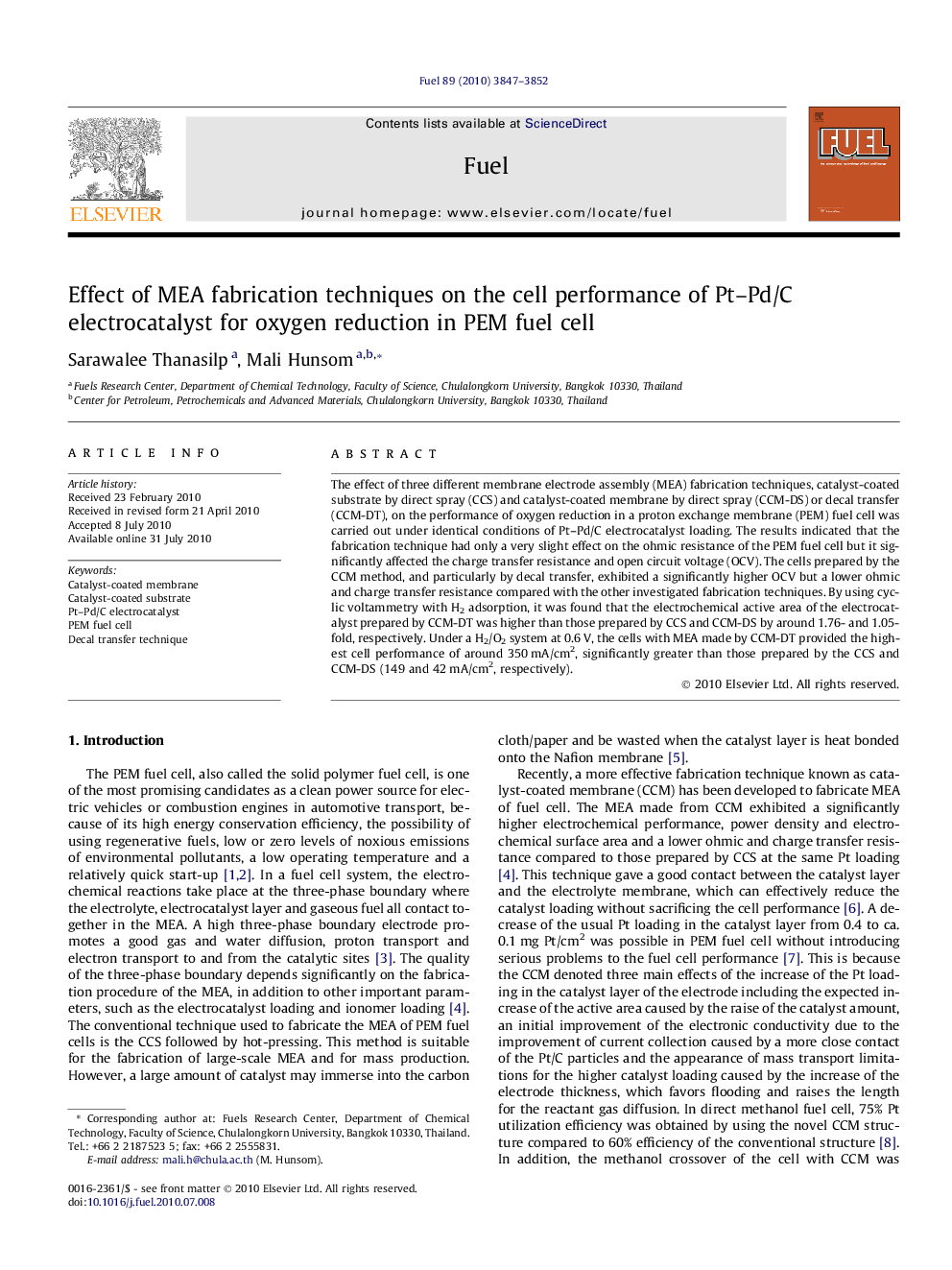| Article ID | Journal | Published Year | Pages | File Type |
|---|---|---|---|---|
| 206467 | Fuel | 2010 | 6 Pages |
The effect of three different membrane electrode assembly (MEA) fabrication techniques, catalyst-coated substrate by direct spray (CCS) and catalyst-coated membrane by direct spray (CCM-DS) or decal transfer (CCM-DT), on the performance of oxygen reduction in a proton exchange membrane (PEM) fuel cell was carried out under identical conditions of Pt–Pd/C electrocatalyst loading. The results indicated that the fabrication technique had only a very slight effect on the ohmic resistance of the PEM fuel cell but it significantly affected the charge transfer resistance and open circuit voltage (OCV). The cells prepared by the CCM method, and particularly by decal transfer, exhibited a significantly higher OCV but a lower ohmic and charge transfer resistance compared with the other investigated fabrication techniques. By using cyclic voltammetry with H2 adsorption, it was found that the electrochemical active area of the electrocatalyst prepared by CCM-DT was higher than those prepared by CCS and CCM-DS by around 1.76- and 1.05-fold, respectively. Under a H2/O2 system at 0.6 V, the cells with MEA made by CCM-DT provided the highest cell performance of around 350 mA/cm2, significantly greater than those prepared by the CCS and CCM-DS (149 and 42 mA/cm2, respectively).
